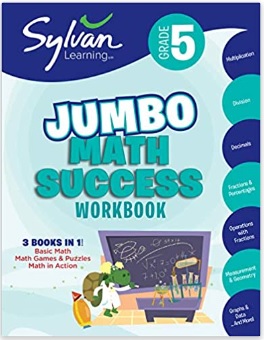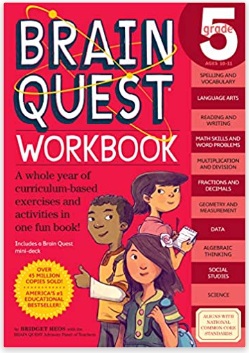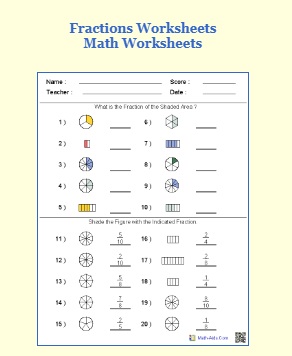[am4show have='p156;p157;p158' guest_error='guest_error_msg' user_error='user_error_msg' ]
If you need help with Multiplication Tables...
If you haven’t memorized your multiplication table yet, I am going to show you how to you need to memorize only three of the 400 numbers on a 20 times table in order to know your table.
Download the student worksheet that goes with this lesson.
Math isn’t about solving problems on any one particular way, but rather it’s about puzzling the solution out multiple ways! The times table is essential to doing math in your head, but you don’t need to know every cell on the table by heart. With a couple of quick tips and tricks, you’ll be able to know your table up to 20 without a lot of memorization simply by being clever about the way you go about it.
Arithmetic Review Session
Students are ready for our math program when they are comfortable adding, subtracting, multiplying and dividing whole numbers, as well as having their multiplication table memorized. However, it may be useful to review these in depth before starting Unit 1: Fractions, especially if students have had a long summer break.
Grab your math journal and let's do a full review of addition, subtraction, multiplication, division and the times tables together! We will also cover multiples and factors, as they are so useful when the students start Unit 1: Fractions.
Download Student Worksheet & Exercises
Isn’t this a really cool (and FAST) way to multiply by twelve? It's a lot faster than using the Babylonian finger-segment system. Try some problems on your own and check your work with a calculator. How do you think this works?
How to Multiply by 12
Do you think you'll need to know how to multiply by 12 or 11 more? Think of it this way: how often do you need to figure out how many dozen you need of something? It comes up a lot more than needing to know how many batches of 11, doesn't it? That's because of the way we've decided to group things mathematically as a society.
Here's why: We picked 12 based on how we used to count on our fingers using the "finger segment" system. If you look at your hands, you'll notice that your index finger has three segments to it. So does your middle finger, ring finger, and pinkie. Since you have four fingers, you actually have 12 sections for counting with (we're not including your thumb, which is the pointer... your thumb rests on the section you're currently on). When your thumb touches the tip of your index finger, that means "1". When your thumb touches the middle segment, that's "2", and the base segment is "3". The tip of your middle finger is "4", and so on. That's how we came to use the 12-in-a-batch system.
Fortunately we now have calculators and a base-ten system, so this whole thing worked out well. But still the number 12 persists! So I thought you'd like this video, which expands on the idea of quickly multiplying in your head that I created other videos for. This is very similar to the shortcut used when multiplying by eleven, but it also involves some doubling. Are you ready?
Math from Left to Right (Mental Math)
In school, you are trained to solve math problems on paper, at a desk. The problem with that is, for most people, math problems don’t usually come with a desk or a pencil. They pop up in the checkout line when paying for groceries, figuring out your gas mileage at the pump, or when counting calories at a restaurant. Learning how to solve math problems in your head is an essential everyday life skill, especially if you don’t want to be ripped off in money transactions.
Download the student worksheet that goes with this lesson.
Learning how to calculate in your head doesn’t have to be hard or scary, but it does require a little rewiring of the current math solving conditioning that you’ve already got in your brain. Specifically, we’re going to train your mind that when you solve math problems without paper, you must do it from left to right. It’s so much easier to think about math problems from left to right, so that’s how we’re going to do them.
Add and Multiply Quickly in your Head
Want a peek under the 'hood' of my brain when I do a mental math calculation? This video is a slow-motion, step-by-step snapshot of what goes on when I add numbers in my head. The first thing you need to learn is how to add from LEFT to RIGHT, which is opposite from most math classes out there. I'll show you how to do this - it's easy, and essential to working bigger numbers in your head.
Quicker Multiplication
If you don’t have the patience to do multiplication on paper for every single math problem that comes your way, then you’ll really enjoy this math lesson! You’ll be able to multiply one and two digit numbers in your head, which you’ll be able to use when checking your answers on a math test, or just whenever you need to multiply something quickly when paper’s not around.
Download the student worksheet that goes with this lesson.
If you haven’t already mastered your multiplication tables, make sure you have one handy to refer to as you go along.
Squaring Two-Digit Numbers
This neat little trick shortcuts the multiplication process by breaking it into easy chunks that your brain can handle. The first thing you need to do is multiply the digits together, then double that result and add a zero, and then square each digit separately, and finally add up the results.
Slightly confused? Great - we made a video that outlines each step. There's a definite pattern and flow to it. With practice, you will be able to do this one in your head within a very short time. Have fun!
Download Student Worksheet & Exercises
How to Square Bigger Numbers Faster in your Head
Squaring three-digit numbers is one of the most impressive mental math calculations, and it doesn't take a whole lot of effort after you've mastered two-digits. It's like the difference between juggling three balls and five balls. Most folks (with a bit of practice) can juggle three balls. Five objects, however, is a whole other story (and WOW factor).
Once you get the hang of squaring two-digit numbers, three-digit numbers aren't so hard, but you have to keep track as you go along. Don't get discouraged if you feel a little lost. It's just like anything you try for the first time... when you're new at something, in the beginning you aren't very good at it. But with practice, these steps will become second nature and you'll be able to impress your friends, relatives, and math teachers.
Download Student Worksheet & Exercises
The video below has two parts:
Division
If you hate long division like I do, then this lesson will be very useful in showing you how to make the most out of your division tasks without losing sleep over it. It's easy, quick, and a whole lot of fun! If you haven’t already mastered your multiplication tables, make sure you have one handy to refer to as you go along.
Download the student worksheet that goes with this lesson.
Many, many thanks go to Arthur Benjamin, a mathematics professor extraordinaire and professional magician who inspired much of this content we covered today.
Divisibility
Can you look at a number and tell right away if it’s divisible by another number? Well, it’s pretty easy for 2 – if it’s an even number, it’s definitely divisible by two. Testing whether a number is divisible by five is easy as well. How can you tell?
In this video, I’ll show you some tricks to determine if a number is divisible by 3, 4, 6 and 7 before you start to divide. Some are simple and fast and some are a bit more complex. These can be very useful tricks for working with larger numbers (or just really fun to play with for a bit).
Download Student Worksheet & Exercises
It’s pretty complex to be able to tell if a number is divisible by 7, but I think it's really neat that there’s a way to figure it out before you actually do the math. What do you think?
Exponents
Have you ever heard someone refer to a “million billion” of something? Is that more or less than a “billion million?” In this video, I’ll show you how to write down these numbers and figure out which one is larger.
Did one of these numbers sound bigger to you? To me, they’re both a strange way to say the exact same number – which is actually a quadrillion!
Download Student Worksheet & Exercises
Easy Dice Game for Honing Math Skills
Did you know I carry a set of dice in my pocket just for this game? It's as old as the hills and just as fun to play now as it was when I was a little math whiz back in 2nd grade. (No kidding - when we had 'math races', I was always team captain. Not quite the same thing as captain on the soccer field, though...)
This is one of those quick-yet-satisfying dice games you can play to hone your thinking skills and keep your kids busy until the waiter arrives with your food. All you need are five or six standard 6-sided dice and two 12-sided dice. (Note - if you can't find the 12-sided dice, just skip it for now. You can easily substitute your brain for the 12-sided dice. I'll show you how.)
Download Student Worksheet & Exercises
First, roll the two 12-sided dice. Multiply the two numbers in your head. If you rolled a 6 and 6, you'd now have 36. That's your target number. If you don't have the 12-sided dice, just think up two numbers, each between 1 and 12 and use those.
Next, roll the 6-sided dice. Now, using your arithmetic skills, figure out a way to add, subtract, multiply or divide those three numbers to get the number you rolled with the first set. So if you rolled six 6-sided dice and got 4, 5, 2, 1, 1, 5, you could do this:
(Red numbers are the ones rolled on 6-sided dice.)
(4 x 5) - 2 = 18
18 x (1 + 1) = 36
You don't have to use all the numbers, but you can't double up and use a 4 twice if you only rolled one 4. And that's it! It's loads of fun and engaging, because it's got more than one answer. And sometimes there's no answer (although rarely!). As you get faster and better at this game, try taking away one or two of the dice. It's more challenging.
HOT TIP: You can add in the use of exponents when your kids get the hang of the game. An exponent tells you how many times to multiply a number by itself. For example, a 2 with a 3 exponent looks like: 23 = 2 x 2 x 2 = 8. To use exponents, simply use one of the numbers as an exponent. For example, if you rolled five 6-sided dice and got 5, 2, 3, 2, 4, you can do this to get 36 (given 36 came from the 12-sided dice):
(Red numbers are the ones rolled on 6-sided dice.)
(5 x 2) = 102 = 100
100 - (43) = 36
When your kids get good, you can up the ante and use a set similar to what I have in my purse: one 20-sided double dice and a handful of 6-sided. Math craze, anyone?
If you need more practice with Multiplication and Division:
As long as your student knows how to do the skill, it's fine if they need extra time to work through the problems and exercises. This is a "go at your own pace" course, so they should be fine. (If division is new, you'll need extra time to work with your student outside of class time).
For inexpensive resources, I really like the Sylvan and Brainquest series. They use an actual pencil and paper, and don't feel cumbersome the way "skill drills" usually do. I also use the Math Aids (free) to help with a particular area that kids need practice in.
NOTE: It's important that you don't over-use math skill drills, as they will turn kids off to math and do more harm than good if you're not careful. Keep it fun and simple, and know that it's okay if they haven't mastered something in math, as it usually comes around again when they go deeper into science and engineering and they can take another go at it.




